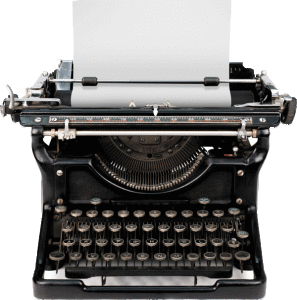 Have you ever heard the saying: “See the forest before the trees?” My professors in grad school used it to describe how people often see the BIG picture before they see details.
My brain works the opposite.
Have you ever heard the saying: “See the forest before the trees?” My professors in grad school used it to describe how people often see the BIG picture before they see details.
My brain works the opposite.
I see all the trees long before I see the forest they create. This is a problem because it means I write with too much detail.
Friend Saves the Day
In August, a friend urged me to take “Short Essay, Big Topic: Tackling Major Themes in 1,000 Words or Less,” a workshop taught by Nadine Kenney-Johnstone. I had a really BIG topic that I needed to write about for the Journal of the American Revolution: The historical significance of the Treaty of Paris 1763.
My friend’s suggestion felt like kismet. I signed up.
The Container Essay
Kenney-Johnstone introduced me to the Container Essay, a tool writers use to convey large, complex ideas to readers without overwhelming them with information. Container essays use objects, emotions, songs, events, textures, or sounds to stand in for a large, complex idea. All container essays are reflective.
In class, we studied two examples: Ann Hood’s “Now I Need a Place to Hide Away” and Joyce Maynard’s “My Mother’s Chutney.” In these essays, Hood used the Beatles’ music and Maynard her mother’s chutney to convey profound grief.
 Container Essay Formula
Container Essay Formula
Container essays are formulaic and have eight components.
1. First paragraph introduces topic, lay of the land, character, or question of the essay. ("Why" questions serve as great hooks.)
2. Second paragraph/section reveals the stakes of the essay or creates connections with the stakes. (Does the character want something that they must overcome obstacles to get? Does the character possess something that they will lose?)
3. Essay must show a passage of time because it should be reflective.
4. Essay must raise stakes with oncoming obstacles or scarcity.
5. Essay must give readers a chance to breathe about halfway through.
6. Essay must deepen in complexity and conflict about 2/3rds of the way through.
7. Essay must deliver a punch line, which should stand alone.
8. Essay must wrap-up quickly after the punch line by showing what the author learned about herself, or the subject, upon reflection.
 My Outline
My Outline
After showing us what a container essay looked like, Kenney-Johnstone encouraged the class to create an outline or start writing their essays.
I drafted the following outline:
Container: Treaty of Paris 1763: it represented hope for a peaceful future as well as the boundaries and limitations of that hope.
Conflict or Obstacle: Lasting peace brought forth by treaty seemed too good to be true.
Climax of Essay: The Treaty of Paris 1763 dashed the hope for the lasting peace it promised by causing the American Revolution and its War for Independence.
Paragraph 1: Open with celebration of August 10, 1763 in Boston when Governor Francis Bernard declared the “Definitive Peace.”
- Why Question: “Why were Bostonians so excited about the Treaty, so excited they celebrated with fireworks?
Section 2: Treaty ended war by bringing a seemingly definitive peace to North America
- Discuss physicality of Treaty
- Discuss war related objects such as Phips Proclamation
Section 3: Treaty redrew map of North America
- Discuss 1763 Map on display
Section 4: Treaty needed to span cultural maps/landscapes
- Discuss Pontiac’s Rebellion
- Discuss wampum belt and peace medals
Section 5: Treaty’s relationship to the Council Chamber in the Old State House where it is on display
- Discuss the situation of the room and balcony
Section 6: Treaty redrew political landscape—what did it do for Massachusetts and governance, London’s treatment of Colonies?
Section 7: Limitations of Treaty of Paris
- Deliver Punch line: The Revolution
- Discuss how peace breaks down with violent protests and how war returned to North America—the Boston Massacre happened just outside Council Chamber window, the Boston Tea Party nearby, Lexington & Concord, Battle of Bunker Hill
Section 8: Treaty of Paris 1783 and the lessons learned from 1763
Lesson 1: Boundaries are fluid, not fixed
- Map of North America and Great Britain redrawn again
- Problems re-occur during the War of 1812
Lesson 2: “Lessons” learned from Native American negotiations.
- Continue to exclude Native Americans from formal Treaty
- Make peace after treaty by exiling the British-allied Native peoples and dispossess the majority of Native Americans from their land, as seen in New York
Lesson 3: Treaty of Paris 1783 brings more representation to the United States but less to other British colonies
 Results
Results
On Tuesday September 3, the Journal of the American Revolution published my first container essay, “1763: A Revolutionary Peace Exhibit.” I am happy with how the essay came out. I also see room for improvement.
In my next attempt, I would like to be closer to 1,000 words; “1763: A Revolutionary Peace Exhibit” came it at 1,630. I would also like my container to be more specific and concrete; sometimes the Treaty served as my container, other times it was the peace terms contained within the Treaty, and sometimes it was the hope contained in the peace terms of the Treaty.
I plan to use the container essay formula as I continue my quest to present academic-quality history to a broad audience. The blueprint of the essay provides me with a way to focus my BIG topics into concepts that non-specialists can understand. I also find that I am better able to limit detail when I focus on a container.
What Do You Think?
How do you focus your BIG topics or ideas to write short essays? Have you ever written a container essay? If so, how did it turn out?
